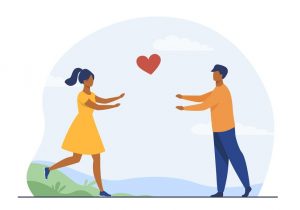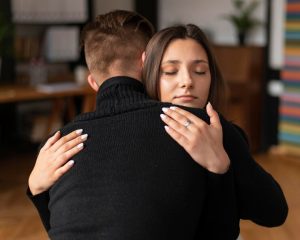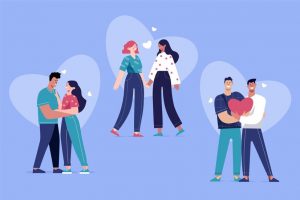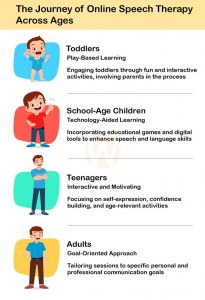Types of Anxiety Disorders and their Symptoms
By Prapoorna M
Last Updated: November 27, 2021
Anxiety is felt in different ways for different reasons. When anxiety is experienced in a specific way, it is identified as a specific anxiety Condition.
The most common types of Anxiety disorders are:
- Generalized Anxiety Disorder
- Panic Disorder
- Social Anxiety
- Specific phobias
- Obsessive Compulsive Disorder
- Post Traumatic Stress Disorder
Types of Anxiety Disorders
Some people feel anxious throughout a certain period while some make it a habit of getting anxious always. Anxiety experienced in a specific way, is identified as a specific anxiety Condition.
Generalized Anxiety Disorder
It’s common for all of us to feel anxious and stressful from time to time when we are faced with a challenging situation like deadlines at work, exams and a job interview. The anxiety that we experience in these challenging situations can help us in staying alert and motivates us to get
things done. However, some people may feel tense and anxious most of the time. For them, it’s an impossible task to relax. Even petty things like daily household chores can lead to uncontrollable worry and anxiety so much so that they start to interfere with their daily lives.
Signs and symptoms
People suffering from GAD may experience signs such as
- Headaches
- Rapid heart rate
- Uneasiness around chest and stomach
- Excessive sweating
- Inability to relax and sleep etc.
Such experiences often become worse when the person has nothing big to work on e.g. after work or while lying on bed.

Panic Disorder
Panic disorder is a state of extreme and intense anxiety accompanied by unreasoning fear. They tend to occur out of the blue and involve a strong feeling that something terrible is going to happen. Most of the times, this fear might not have any kind of logical reasoning.
Signs and symptoms
The commonly experienced physical symptoms of panic attack are:
- Breathlessness
- Chest discomfort or pain
- Hot flashes
- Fear of dying and fear of not being in control of oneself or going crazy
- Nausea, dizziness and trembling
- Abdominal distress
Panic attacks arise from constant worrying which might suddenly get worsen and hence can happen anywhere, anytime and without warning. The person may live in a fear of another attack and might avoid places where they had an attack. This is why some people are really afraid of being alone at home or avoid going to busy places or closed places. Noticing the same symptoms when having other physical problems like migraine, low blood sugar level or illness like flu are different.
Social Anxiety
It’s a very common experience to feel anxious while speaking in public or addressing a group. It’s equally common to experience nervous when meeting strangers or people we know. However, for people with social anxiety disorder, the social situations can result in experience of intense anxiety. The fear of being judged, made fun of, and getting humiliated even in ordinary everyday situations makes a rise in the anxiety levels. For e.g. the thought of going out for an office lunch/dinner can be daunting for people with social phobia.
Signs and symptoms
Some of the commonly experienced signs of people suffering from social anxiety are:
- Avoiding people and important occasions in the fear of speaking something inapt.
- Speaking too fast or stammering while speaking to strangers
- Excessive worry that they will say something wrong
- Getting anxious that their words or behaviors might result in bringing humiliation or embarrassment.
- Excessive sweating, trembling and racing heart when having an interaction or when trying to speak.
Specific Phobias
Fear is generated by our body’s natural defense mechanism to situations called fight or flight which pose a threat to our safety. Many of us have a fear for snakes, lizards, heights or taking a flight. Fear about certain things, situations or an animal is very common. But to some people, fear is always a shadow that never leaves them. Such people react to these fears by exaggerating the risk in their minds. This includes the experience of lasting, uncontrollable and unreasonable fear triggered by the presence of just a mere thought of a specific object or situation that poses no or very little danger.
People with such anxieties often avoid situations or friends and miss many moments in their life which could be really worthy. People suffering these phobias, though recognize that their fear is unreasonable and irrational, yet are unable to resist it. Panic attacks are often experienced with specific phobias during which the mere mental image or exposure to the phobic situation causes overwhelming physical sensations which include palpitations, dizziness, pounding heart, chest pain etc.
Types of specific phobias
The commonly experienced types of specific phobias are:
- Acrophobia: Fear of Heights
- Animal phobia: Fear that relates to animals or insects.
- Natural environmental phobias: This involves the fear of heights, water, cyclones etc.
- Blood/injection/injury phobia: Examples include fear of invasive procedures, blood, or being infected with various infections. This kind of phobia is commonly seen in people suffering from Obsessive Compulsive Disorder.
Signs and symptoms
The commonly experienced signs if you have a specific phobia are
- Persistent, excessive, and unreasonable fear of a specific object, activity or situation. For example heights, spider, blood, elevators etc.
- Avoiding places and situations where they may have to face phobic stimulus. For example fear of heights may lead to avoidance of the bridge on the way to work and taking another route even if causes delay in reaching work.
- The anxiety about the phobic stimulus is so intense that it causes significant interference with other important areas of functioning like work, personal time or studying.
Obsessive Compulsive Disorder
This is a popular disorder and unfortunately, a bit commonly found one. This is often found in people who religiously follow and repeat certain things. Such people can’t be satisfied like everyone does.
OCD is a common and chronic condition where the person experiences uncontrollable and recurring thoughts (Obsessions). In order to deal with these recurrent thoughts (obsessions) the person has an urge to repeat certain behavior again and again. For example, obsessive thoughts about fear of contamination may lead to repeated washing and avoiding certain things (compulsions).
Anxiety in moderation is helpful and can influence our behavior in a helpful way. For example, thought like “I might not have locked the door properly” might result in you checking the door lock twice before you leave and ensure that your house is safe. However, if that thought becomes rumination and gets you obsessed with it, then it could lead to unhealthy patterns of behavior and cause significant disturbance in your daily functioning. OCD can be quite distressing and can lead to lot of frustration, but medication and therapy can significantly help to keep it under control.

Signs and symptoms
Signs that are commonly associated with OCD are frequent obsessive thoughts are compulsive behaviors discussed above. Other common signs are:
Obsession centered on excessive cleanliness or order:
This includes repeated hand washing or cleaning to reduce the fear of contamination.
Checking on:
This includes symptoms like frequent checking of doors, gas stoves or headlights to reduce the anxiety of being unsafe.
Counting:
This includes repeated counting of items or things such as shops, or idols while walking.
Religious issues:
A compulsion to pray in a certain way or in a certain time each day to avoid something bad from happening.
Post Traumatic Stress Disorder
Post Traumatic Stress Disorder or PTSD is a very likely disorder in sensitive-minded people. PTSD is a form of anxiety disorder which can develop in people who were involved in or witnessed traumatic events which threatened their safety or that of others around them. This could be a death of a family member, post war trauma, assault, or an accident.
What is it like to have PTSD?
Going through a traumatic experience, triggers the symptoms of PTSD such as having difficulty falling asleep, restless, or anxious thoughts. This is known as “acute stress reaction”. But slowly these symptoms disappear with time. However, people having PTSD may find it really difficult to get away with thoughts relating to the traumatic experiences. Undergoing a therapy really helps such people.
“I started experiencing symptoms of PTSD after I survived a physical, mental and sexual assault. I had recurrent flashback which would remind me of the same incident which took place then. These flashbacks could happen anytime, anywhere and were extremely dreadful. It was like reliving those years”. I wouldn’t understand why my brain wasn’t able to cope with it. Not being able to sleep and the sense of never being at peace were exhausting”, says a person with PTSD.
Signs and symptoms
Reliving the traumatic experience:
It is not an easy task to experience flashbacks, nightmares about the traumatic event often in the form of vivid images. This may result in having extreme and intense emotional and physical reactions such as racing heart beat, palpitations, sweating, dizziness etc.
Staying Away:
Keeping away from people, situations or things which might bring back memories of the traumatic event is also because of PTSD.
Hypervigilance:
Hypervigilance is being alert most of the time. The person might even experience difficulty falling asleep and might not be able to concentrate enough because of the haunting experiences.
You might feel less interested in other people and might not enjoy your favorite hobbies or interests. Inability to sleep, snapping at people for small things and feeling low most time of the day etc. are observed.
Book your Free Consultation Today
Parent/Caregiver Info:
Client’s Details:
* Error Message









